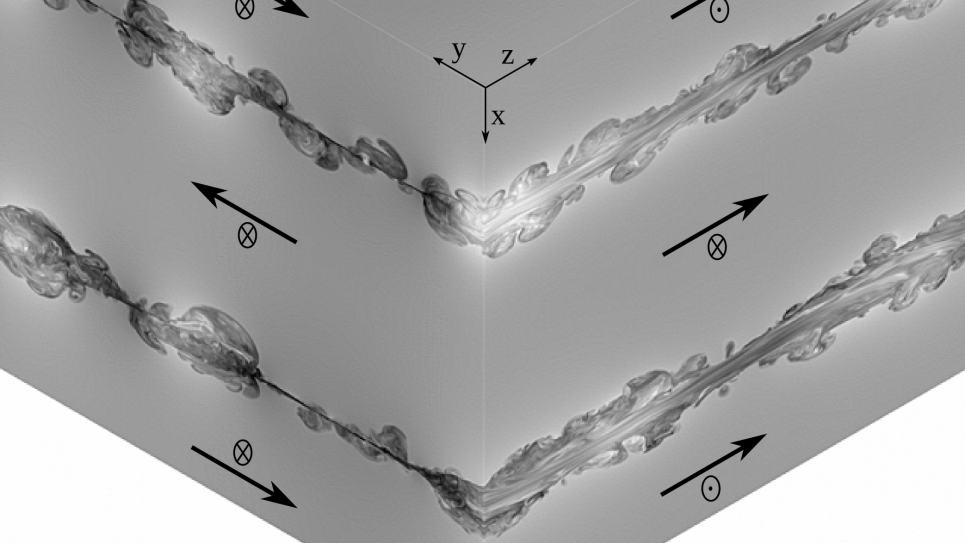
The Rate of Spontaneous Plasma Reconnection
Magnetic reconnection is a topological rearrangement of magnetic field lines, leading to the release of magnetic energy, often associated with solar X-ray flares. One of the key questions dogging this field of study revolves around the reconnection rate, the velocity at which magnetic field lines converge in a current layer, which has been inconsistent between observations of the sun, fluid simulations and plasma simulations.
To gain greater insight into plasma reconnection, project researchers plan to use high-resolution Hall magnetohydrodynamic (MHD) simulations, a simple framework for electron-proton plasmas. Resolving whether plasma reconnection is inherently different from resistive MHD reconnection is a key to many space and solar physics phenomena, from reconnection in the solar corona to acceleration in high energy sources, like blazars or gamma ray bursts.
It has been suggested that ambient turbulence also enhances reconnection rate, so that relatively high observed rates could be explained by two completely different mechanisms: either plasma effects or ambient turbulence. Previously, the team performed 3D MHD simulations above the Lundquist number of 10^4, for the first time, and made the first measurements of 3D spontaneous reconnection rate in MHD in resistive-independent regime.The rate was around 0.015 of Alfven speed, a rate independent on resistivity and therefore corresponds to the so-called fast reconnection.
The team is trying to resolve the puzzle of plasma reconnection rates by working with a minimal model that includes plasma effects by Hall-MHD approximation and by conducting 3D simulations in a simple and universal setup with only two governing parameters. By simplifying the parameter space, they hope to figure large-scale reconnection rates for electron-proton plasma. Additionally, they will perform a single particle-in-cell (PIC) simulation that will exactly mimic parameters in the lowest-resolution Hall-MHD simulation in order to rectify the importance of electron physics on the reconnection rate.